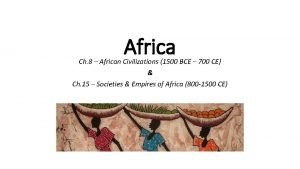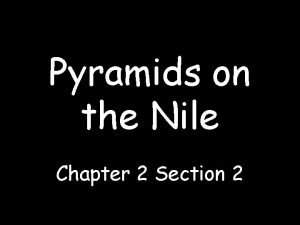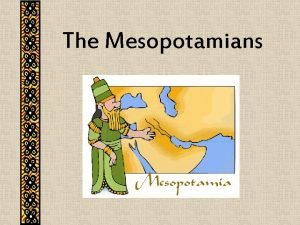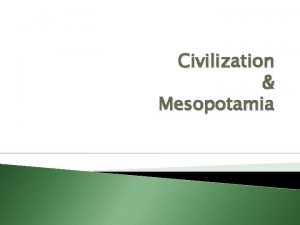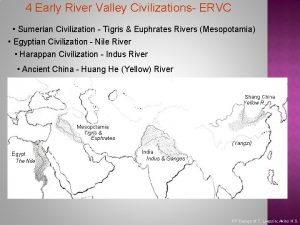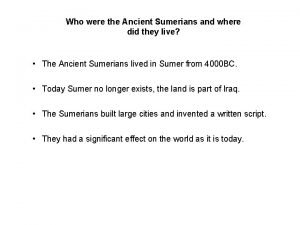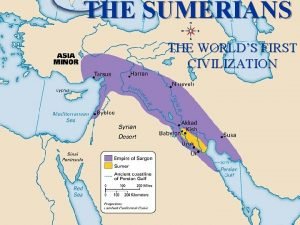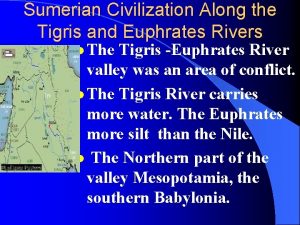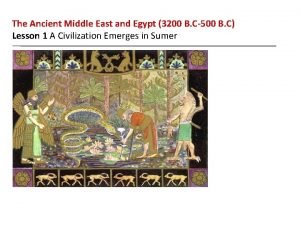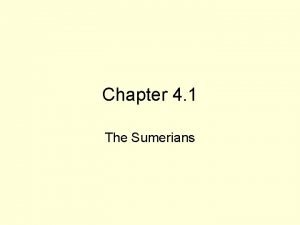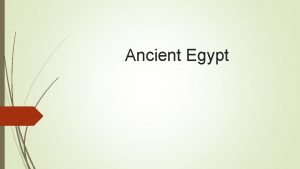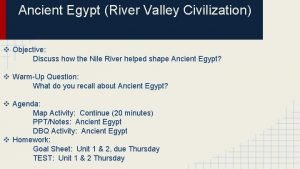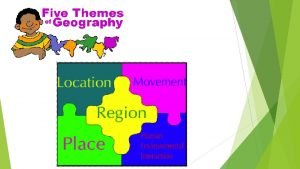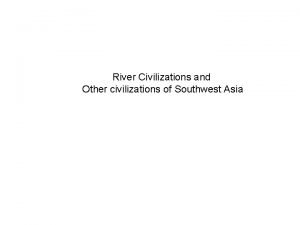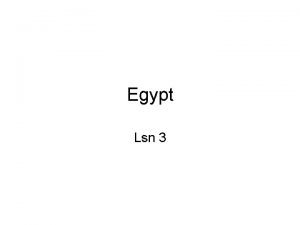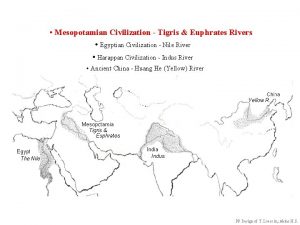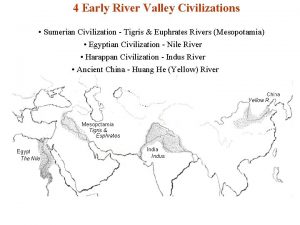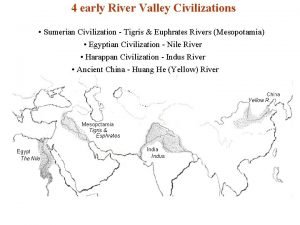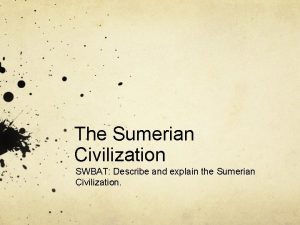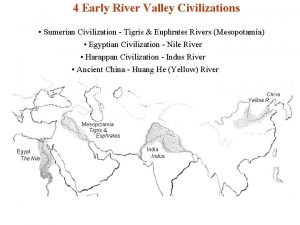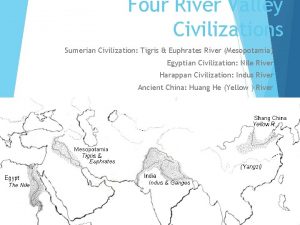PYRAMIDS ON THE NILE While the Sumerian civilization






















- Slides: 22

PYRAMIDS ON THE NILE

� While the Sumerian civilization was on the rise, a similar process took place along the banks of the Nile River in Egypt

GEOGRAPHY OF EGYPT The Nile River flows northward across Africa for over 4, 100 miles, making it the longest river in the world � As in Mesopotamia, yearly flooding brought the water and rich soil that allowed settlements to grow. �

GEOGRAPHY (2) � Every year in July, rains and melting snow from the mountains of east Africa caused the Nile River to rise and spill over its banks � When the river receded in October, it left behind a rich deposit of silt

ENVIRONMENTAL CHALLENGES � Compared to the unpredictable Tigris and Euphrates rivers, the Nile was as regular as clockwork. Even so, life in Egypt had its risks. � When the Nile floodwaters were just a few feet lower than normal, the amount of fresh silt and water for the crops was greatly reduced. Thousands of people starved

ENVIRONMENTAL CHALLENGES (2) � When floodwaters were higher than usual, the unwanted water destroyed homes and the seeds farmers needed for planting � The vast deserts on both sides of the Nile acted as natural barriers between Egypt and other lands. It forced Egyptians to live on a very small portion of land reduced interaction with other peoples. However, the deserts did shut out early invaders

UPPER AND LOWER EGYPT � Ancient Egyptians lived along the Nile from the mouth well into the interior of Africa. River travel was common, but it ended at the point in the Nile where boulders turn the river into churning rapids called cataracts.

UPPER AND LOWER EGYPT (2) � The elevation is higher near the Southern point of the Nile. This area is called Upper Egypt. To the north near the Mediterranean Sea lays lower Egypt and includes the delta.

UPPER AND LOWER EGYPT (3) � Lower and upper Egypt ruled as two separate kingdoms until a king named Narmer united the two areas. Narmer started the first Egyptian dynasty. Eventually, the history of ancient Egypt would consist of 31 dynasties, spanning 2, 600 years.

PHARAOHS RULE AS GODS � � In Egypt kings were gods. The Egyptian god-kings were called pharaohs. A type of government in which rule is based on religious authority is called a theocracy. Egyptians believed that pharaohs ruled even after their death. A pharaoh’s tomb was even more important than their palace.

PHARAOHS RULE AS GODS (2) � The building of the pyramids reflects the strength of Egyptian civilization. It shows their economic strength, technology achievements and support of the massive public works projects as well as the leadership and government organization



EGYPTIAN CULTURE: RELIGION � Polytheistic – Egyptians worshipped more than 2000 gods and built temples to honor them. � Belief in an afterlife – Royal and elite Egyptians’ had their bodies preserved by mummification. Attendants placed the mummy in a coffin inside a tomb with items the dead person could use in the after life. These items included clothing, food, and jewelry.




RELIGION (CONTINUED) � Kings and queens built pyramids for their tombs while other Egyptians would build smaller tombs

SOCIAL CLASSES � Social Mobility did exist

EGYPTIAN WRITING � Hieroglyphics – pictures stood for ideas and even sounds. Although hieroglyphics were first written on stone and clay, the Egyptians soon invented a better writing surface called papyrus

SCIENCE AND TECHNOLOGY � Calendar to keep track of floods � Had a system of counting to help assess and collect taxes � Math was used to construct the pyramids � Medicine – set broken bones with splints

INVADERS COME IN � The power of the pharaohs declined about 2180 B. C. This marked the end of a time called the Old Kingdom. � Strong pharaohs regained control during a time period called the Middle Kingdom � (2040 – 1640 B. C. ) � The New Kingdom was under the rule of a group of people from Palestine � (1630 – 1523 BC)
 Aksum had access to the red sea blue nile and white nile
Aksum had access to the red sea blue nile and white nile Chapter 2 section 2 pyramids on the nile
Chapter 2 section 2 pyramids on the nile Where were the sumerians
Where were the sumerians Sumerian civilization
Sumerian civilization Education of indus valley civilization
Education of indus valley civilization Sumerian civilization
Sumerian civilization Where was sumerian civilization located
Where was sumerian civilization located Ancient sumerians
Ancient sumerians Sumerian civilization
Sumerian civilization Sumer river
Sumer river Sumerian civilization
Sumerian civilization Sumerian contribution
Sumerian contribution While do loop
While do loop Nile river basin
Nile river basin Nile river valley advanced cities
Nile river valley advanced cities Kush nile river
Kush nile river Mark vadon
Mark vadon Nile river
Nile river How did the nile shape ancient egypt dbq answer key
How did the nile shape ancient egypt dbq answer key What is egypt relative location
What is egypt relative location Nile river
Nile river Janapriya nile valley madinaguda
Janapriya nile valley madinaguda Nile river basin
Nile river basin
